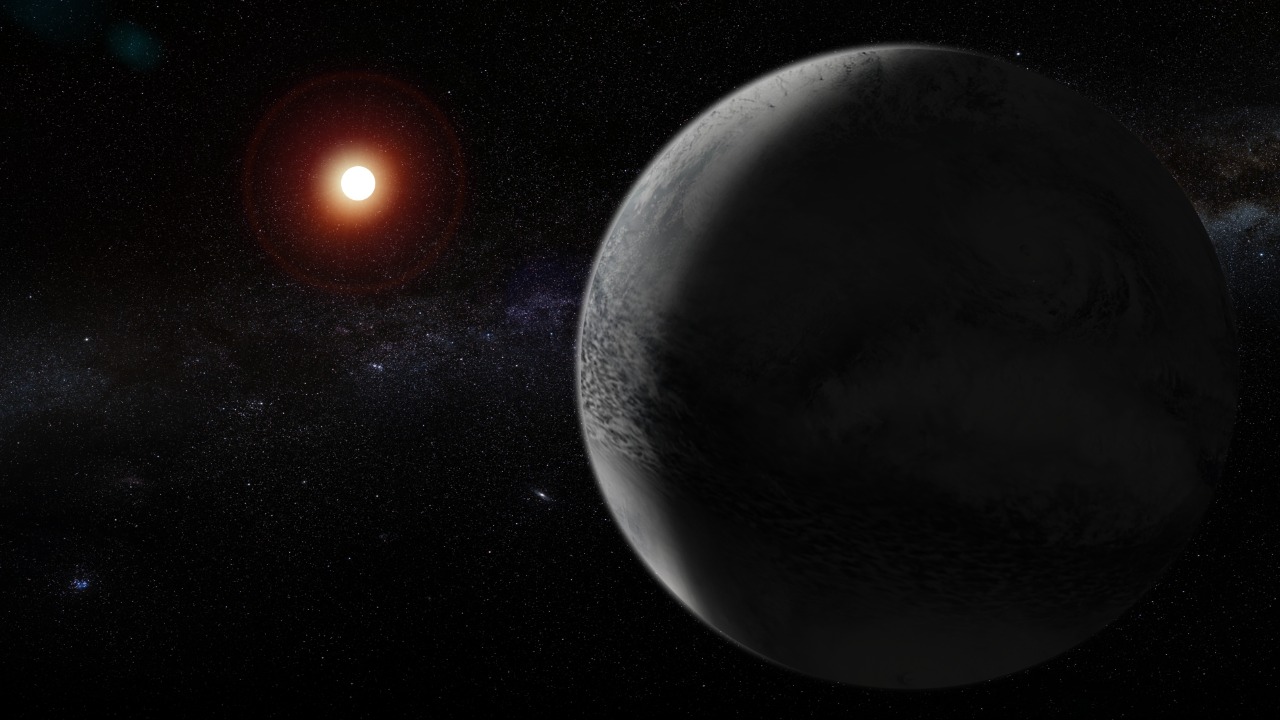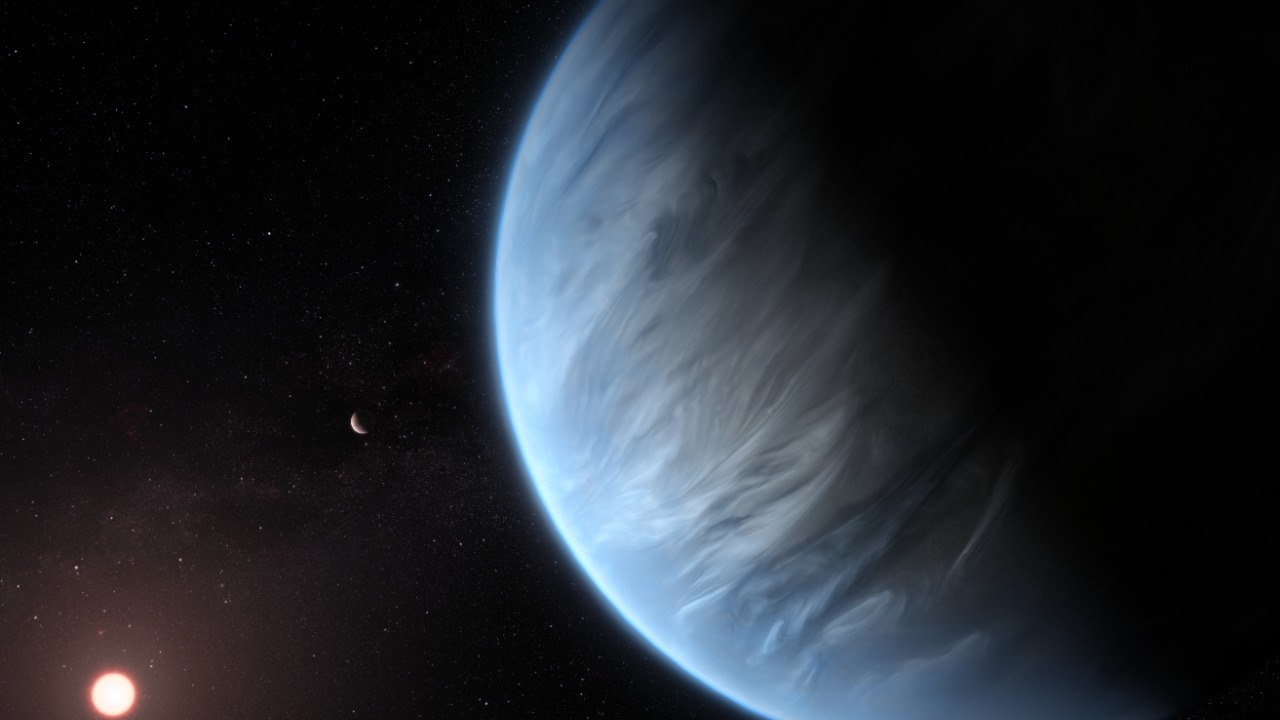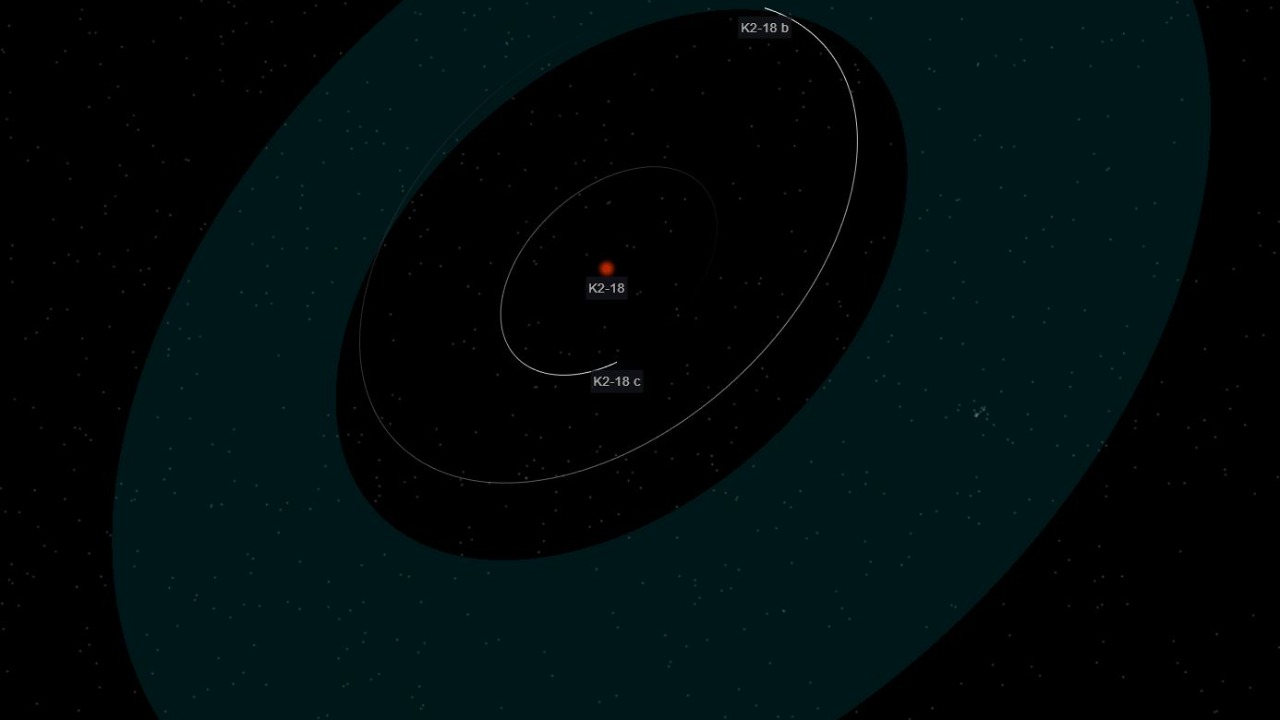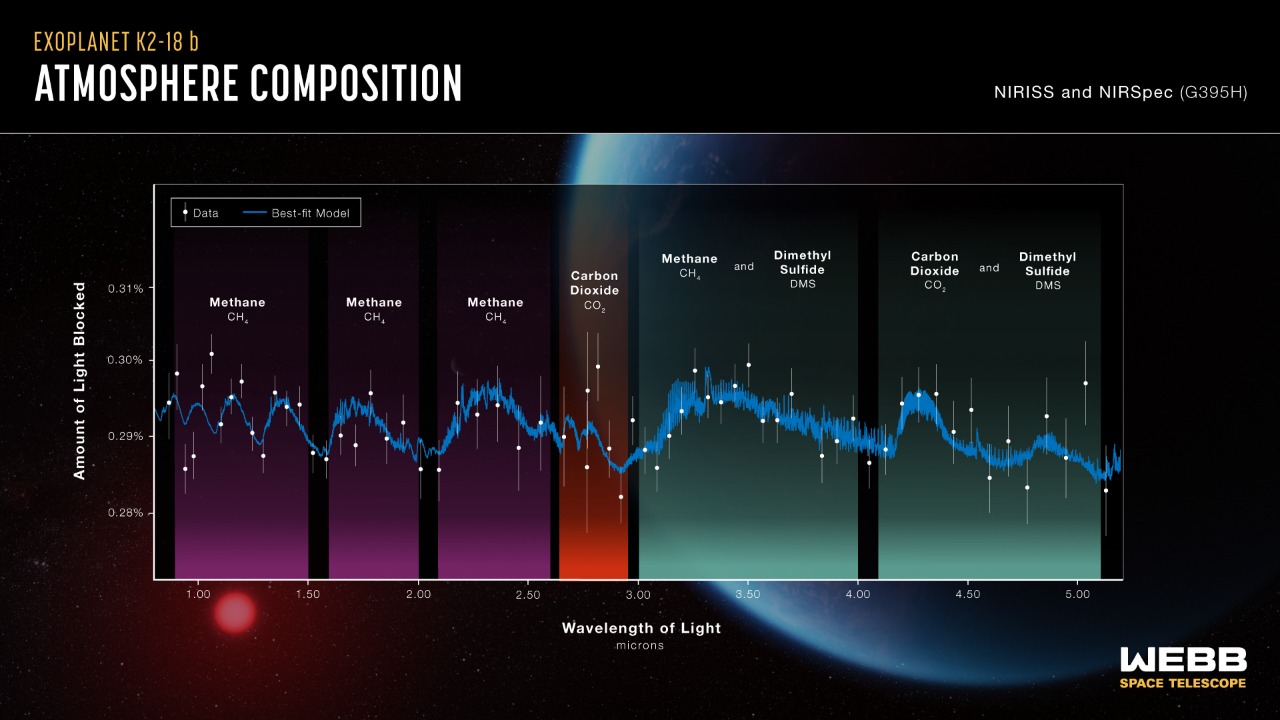
The James Webb Space Telescope has made a groundbreaking discovery by detecting potential biosignatures on the distant exoplanet K2-18b. This finding has sparked excitement and debate within the scientific community, as researchers explore the possibility of life beyond our solar system.
The Significance of K2-18b

K2-18b, an intriguing exoplanet approximately 124 light-years away from Earth, orbits the red dwarf star K2-18 in the constellation Leo. Its size, nearly nine times the mass of Earth, places it in the category of a super-Earth or mini-Neptune. A key feature of K2-18b is its location within the habitable zone of its star, where temperatures could allow for the presence of liquid water—a crucial condition for life as we know it.
What makes K2-18b particularly compelling as a candidate for extraterrestrial life is its atmospheric composition. Recent observations suggest the presence of water vapor, methane, and potentially other organic molecules in its atmosphere. These factors, combined with its position in the habitable zone, make K2-18b a prime location to search for life beyond our solar system. The possibility of a stable atmosphere that can sustain liquid water is an exciting prospect for astrobiologists and astronomers alike.
James Webb Space Telescope’s Role

The James Webb Space Telescope (JWST) represents a significant leap forward in astronomical technology. With its advanced instruments, including the Near Infrared Spectrograph (NIRSpec) and Mid-Infrared Instrument (MIRI), the JWST can analyze the chemical composition of exoplanetary atmospheres with unprecedented precision. Its ability to detect faint signals and distinguish between different molecules allows scientists to identify potential biosignatures that may hint at biological processes.
In the case of K2-18b, the JWST used its spectrographs to study the light passing through the planet’s atmosphere as it transited its host star. By examining the absorption lines in the spectrum, scientists were able to infer the presence of specific molecules such as water vapor and methane, both of which are considered potential indicators of life. The detection of these molecules in the right context could suggest biological activity, sparking a wave of interest and further investigation.
Understanding Biosignatures

Biosignatures are chemical compounds or phenomena that provide scientific evidence of past or present life. They typically include gases like oxygen, methane, and nitrous oxide, which can be produced by biological processes. For instance, on Earth, methane is often associated with biological activity, as it is released by living organisms. Detecting such molecules on other planets is a crucial step in the search for extraterrestrial life.
However, the interpretation of biosignatures is fraught with challenges and skepticism. The scientific community remains cautious, as alternative explanations exist for the presence of these molecules. For example, methane can be produced by geological processes, not just biological ones. This ambiguity fuels ongoing debates and necessitates further research to accurately interpret these signals. As researchers delve deeper into the data, they must consider all possible explanations before drawing conclusions about the existence of life on K2-18b.
Implications for Astrobiology

The discovery of potential biosignatures on K2-18b has profound implications for the field of astrobiology. It highlights the need for continued exploration and the development of more sophisticated instruments to study distant worlds. This finding may influence future missions, such as the European Space Agency’s ARIEL mission, which aims to study the atmospheres of exoplanets. Additionally, it underscores the importance of collaboration among international space agencies to push the boundaries of our understanding of life beyond Earth.
Beyond the scientific realm, the possibility of discovering life on K2-18b raises ethical and philosophical questions. If life exists on other planets, it could reshape our understanding of humanity’s place in the universe. It prompts us to consider how we might interact with extraterrestrial life forms and the moral implications of such interactions. These questions challenge us to reflect on our responsibilities as stewards of life on Earth and beyond.
Skepticism and Further Research

Despite the excitement surrounding the potential discovery of biosignatures on K2-18b, skepticism remains. Critics point out that the detection of methane and other molecules does not definitively prove the existence of life. Geological and chemical processes could also account for these signals, leading some scientists to call for caution and further analysis. As highlighted in a recent discussion, the scientific community emphasizes the importance of corroborating these findings with additional data.
Moving forward, the next steps in the investigation of K2-18b involve follow-up observations using both the James Webb Space Telescope and other instruments. Researchers plan to collect more data to refine their understanding of the planet’s atmosphere and its potential to support life. Collaborative efforts among scientists worldwide are crucial to confirm or refute the initial findings, ensuring that our interpretations are based on robust evidence and sound scientific principles.